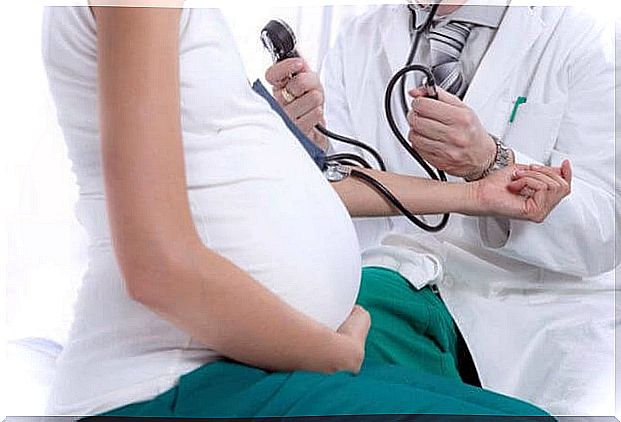How To Prevent Pre-eclampsia In Pregnancy
Pre-eclampsia is a characteristic condition of pregnancy, and although it does not occur in all cases, it is quite common. Although our desire is to avoid any complications during these nine months, illnesses sometimes surprise us.
In the case of this disease, certain risk factors cannot be changed. For example, if it is verified that it is a problem of genetic origin, and that age also has to do with its appearance. Still, some experts believe that the pregnant woman can apply corrections that somehow help to prevent the problem.
To help eliminate the chances of suffering from the known pre-eclampsia, a woman must change her habits. For some people it is easier than for others, with those who lead healthy lives having less trouble changing.
How does pre-eclampsia develop?

Gynecologist Juan Valdivia explains that at least 5% of pregnant women suffer from this condition. It is believed that the complications of the disease can even lead to termination of pregnancy. Its evolution and symptoms have to do with blood pressure, mainly affecting the second half of pregnancy.
“It’s a rise in blood pressure associated with proteinuria, that is, the loss of protein through urine. It usually occurs in the second half of pregnancy, from the 28th week of pregnancy onwards”
-Juan Valdivia-
As we mentioned earlier, some risk factors cannot be avoided. Among the main triggers we have, for example, age. It is believed that women over 35, as well as adolescents, are more likely to develop pre-eclampsia. It is also common in twin pregnancies, women suffering from chronic hypertension and those with poor nutrition.
The development of the disease starts with high pressure levels. Other symptoms are weight gain, swelling of the face and extremities. Likewise, they may present changes in vision, headache, altered liver function and abdominal pain.
Prevention of pre-eclampsia
Some measures can lower the risk of suffering from this pregnancy disease. While certain factors cannot be changed, these recommendations can help us.
- Eliminate habits such as smoking. It is known that tobacco affects the increase in blood pressure, because it affects the blood vessels.
- Apply measures to keep the weight balanced. Overweight and obesity are related to the development of gestational diabetes and hypertension.
- Try to rest and get enough rest. Although the pregnant woman does not have major limitations, it is convenient that she rest properly. Be more leisurely and reduce the amount of activities needed to avoid stress
- Incorporate blue fish into the diet. This fish, in particular, has high levels of omega 3 and vitamins. Omega 3 fatty acids help protect blood vessels.
- Use folic acid supplements. This supplement helps to reduce toxins in the blood, which increase with pregnancy. It is believed to be especially indicated to reduce the risk of suffering pre-eclampsia, because it attacks the high concentrations of homocysteine in the blood.
- Consume calcium daily. The pregnant woman’s diet should include between two and three grams of calcium per day, and this is indicated from the first trimester. So far, no additional calcium supplements have been determined.
- Increase your consumption of antioxidants. Many foods are rich in antioxidants, for example citrus fruits and green leafy vegetables. Vitamin E and C are powerful antioxidants, which serve to remove toxins from the blood.
- Regularity in prenatal consultations, which guarantee the general examination of our systems.
Complications of pre-eclampsia

This disease is considered one of the main causes of fetal morbidity and mortality. This is due to the fact that the condition can terminate or delay pregnancy. Likewise, it is believed to be the cause of more than 300 cases of neonatal mortality per thousand births. Such figures are double those where there are no complications like this one.
The development of pre-eclampsia, in a mild way, can cause many diseases and changes in the health of the mother and child. In the case that it presents in a severe way, the complications can be as follows.
- Increased eye pressure, retinal detachment or photopsy
- Development of oliguria, hyperbilirubinemia and proteinuria
- Appearance of microangiopathic hemolytic anemia
- Pulmonary edema
- Delayed growth of the fetus
- Onset of Hellp Syndrome
- Cerebral hemorrhage
- Renal insufficiency
- Derivation in eclampsia, after having had seizures.









